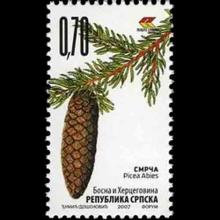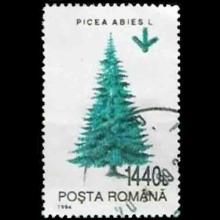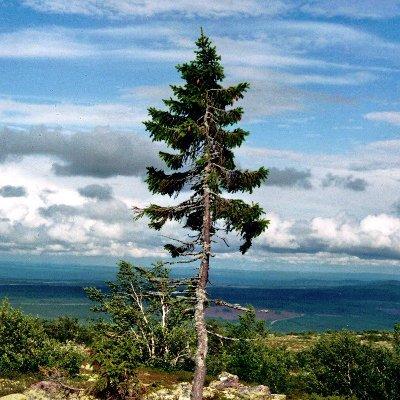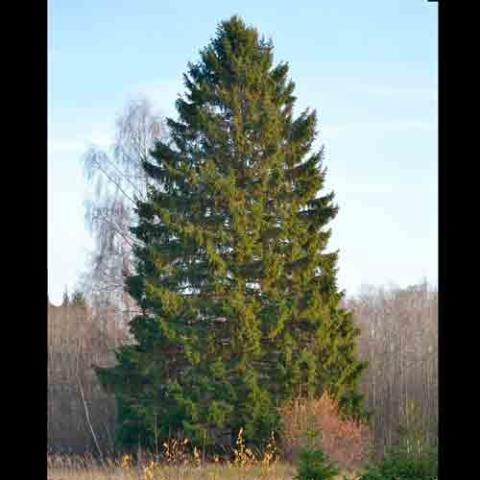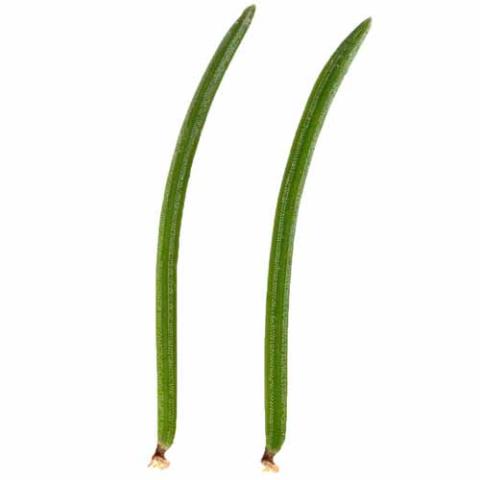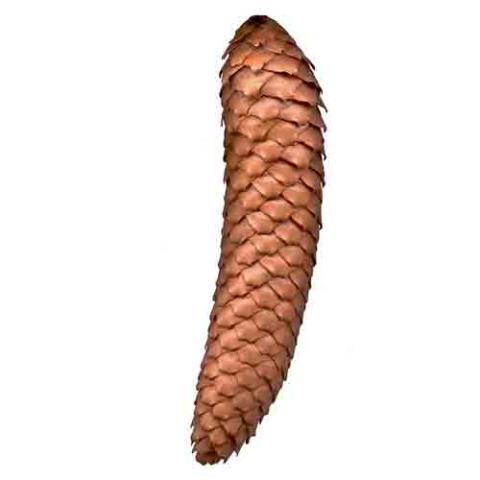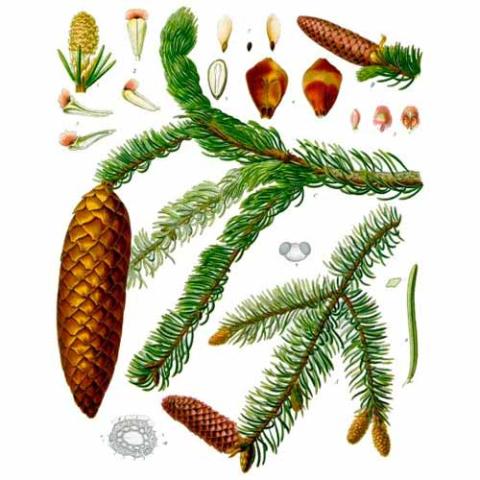NAME(S)
TAXONOMY
PLANTAE ID
THERAPEUTIC
Bosnia and Herzegovina
Issued:
Stamp:
Picea abies
Romania
Issued:
Stamp:
Picea abies
Bosnia and Herzegovina
Issued:
Stamp:
Picea abies
Romania
Issued:
Stamp:
Picea abies
Bosnia and Herzegovina
Issued:
Stamp:
Picea abies
Romania
Issued:
Stamp:
Picea abies
Genus species (Plantae): Picea abies
Picea abies, the Norway spruce or European spruce, is a species of spruce native to Northern, Central and Eastern Europe.
It has branchlets that typically hang downwards, and the largest cones of any spruce, 9–17 cm long. It is very closely related to the Siberian spruce (Picea obovata), which replaces it east of the Ural Mountains, and with which it hybridizes freely. The Norway spruce has a wide distribution for it being planted for its wood, and is the species used as the main Christmas tree in several countries around the world. It was the first gymnosperm to have its genome sequenced. The Latin specific epithet abies means "like Abies, Fir tree".
Description
Norway spruce is a large, fast-growing evergreen coniferous tree growing 35–55 m (115–180 ft) tall and with a trunk diameter of 1 to 1.5 m. It can grow fast when young, up to 1 m per year for the first 25 years under good conditions, but becomes slower once over 20 m (65 ft) tall. The shoots are orange-brown and glabrous. The leaves are needle-like with blunt tips, 12–14 mm long, quadrangular in cross-section, and dark green on all four sides with inconspicuous stomatal lines. The seed cones are 9–17 cm long (the longest of any spruce), and have bluntly to sharply triangular-pointed scale tips. They are green or reddish, maturing brown 5–7 months after pollination. The seeds are black, 4–5 mm long, with a pale brown 15 mm wing. The tallest measured Norway spruce is 62.26 m (204 ft) tall and grows near Ribnica na Pohorju, Slovenia.
Range and ecology
The Norway spruce grows throughout Europe from Norway in the northwest and Poland eastward, and also in the mountains of central Europe, southwest to the western end of the Alps, and southeast in the Carpathians and Balkans to the extreme north of Greece. The northern limit is in the arctic, just north of 70° N in Norway. Its eastern limit in Russia is hard to define, due to extensive hybridization and intergradation with the Siberian spruce, but is usually given as the Ural Mountains. However, trees showing some Siberian spruce characters extend as far west as much of northern Finland, with a few records in northeast Norway. The hybrid is known as Picea × fennica (or Picea abies subsp. fennica, if the two taxa are considered subspecies), and can be distinguished by a tendency towards having hairy shoots and cones with smoothly rounded scales.
Norway spruce cone scales are used as food by the caterpillars of the tortrix moth Cydia illutana, whereas Cydia duplicana feeds on the bark around injuries or canker.
Taxonomy
Populations in southeast Europe tend to have on average longer cones with more pointed scales; these are sometimes distinguished as Picea abies var. acuminata, but there is extensive overlap in variation with trees from other parts of the range.
Some botanists treat Siberian spruce as a subspecies of Norway spruce, though in their typical forms, they are very distinct, the Siberian spruce having cones only 5–10 cm long, with smoothly rounded scales, and pubescent shoots. Genetically Norway and Siberian spruces have turned out to be extremely similar and may be considered as two closely related subspecies of Picea abies.
Another spruce with smoothly rounded cone scales and hairy shoots occurs rarely in the Central Alps in eastern Switzerland. It is also distinct in having thicker, blue-green leaves. Many texts treat this as a variant of Norway spruce, but it is as distinct as many other spruces, and appears to be more closely related to Siberian spruce (Picea obovata), Schrenk's spruce (Picea schrenkiana) from central Asia and Morinda spruce (Picea smithiana) in the Himalaya. Treated as a distinct species, it takes the name Alpine spruce (Picea alpestris). As with Siberian spruce, it hybridizes extensively with Norway spruce; pure specimens are rare. Hybrids are commonly known as Norwegian spruce, which should not be confused with the pure species Norway spruce.
Cultivation
The Norway spruce is one of the most widely planted spruces, both in and outside of its native range, and one of the most economically important coniferous species in Europe. It is used as an ornamental tree in parks and gardens. It is also widely planted for use as a Christmas tree. Every Christmas, the Norwegian capital city, Oslo, provides the cities of London (the Trafalgar Square Christmas tree), Edinburgh and Washington, D.C., with a Norway spruce, which is placed at the central most square of each city. This is mainly a sign of gratitude for the aid these countries gave during the Second World War. In North America, Norway spruce is widely planted, specifically in the Northeastern, Pacific Coast, and Rocky Mountain states, as well as in southeastern Canada. It is naturalized in some parts of North America. There are naturalized populations occurring from Connecticut to Michigan, and it is probable that they occur elsewhere. Norway spruces prefer cool-summer areas and they will grow up to USDA Growing Zone 7.
Seed production begins when the tree is in its fourth decade and total lifespan is up to 300 years in its natural range in Europe. Introduced Norway spruces in the British Isles and North America have a much shorter life expectancy. As the tree ages, its crown thins out and lower branches die off.
In the northern US and Canada, Norway spruce is reported as invasive in some locations; however, it does not pose a problem in Zone 6 and up as the seeds have a significantly reduced germination rate in areas with hot, humid summers.
The Norway spruce tolerates acidic soils well, but does not do well on dry or deficient soils. From 1928 until the 1960s it was planted on surface mine spoils in Indiana.
Cultivars
Several cultivars have been selected as ornamentals ('Barrya', 'Capitata', 'Decumbens', 'Dumosa', 'Clanbrassiliana', 'Gregoryana', 'Inversa', 'Microsperma', 'Nidiformis', 'Ohlendorffii', 'Repens', 'Tabuliformis', 'Maxwellii', 'Virgata', 'Inversa', 'Pendula'), with a wide variety of sizes and shapes, from full-sized forest trees to extremely slow-growing, prostrate forms. They are occasionally traded under the obsolete scientific name Picea excelsa (an illegitimate name). The following cultivars have gained the Royal Horticultural Society's Award of Garden Merit:
- 'Acrocona' - 4 m (13 ft) tall and broad
- 'Clanbrassiliana' - 1.2 m (3.9 ft) tall by 2.4 m (7.9 ft) broad
- 'Inversa' - 9 m (30 ft) tall by 4 m (13 ft) broad
- 'Little Gem' - 0.5 m (1.6 ft) tall and broad
- 'Nidiformis' - 1.5 m (4.9 ft) tall by 4 m (13 ft) broad
Reference: Wikipedia, pfaf.org
Photo credit: @HenrykTheHunter

